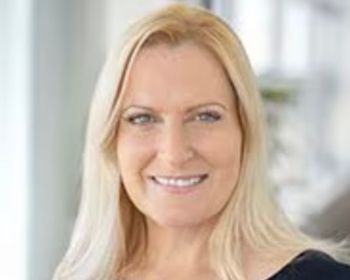
Curae secures more hospital partnerships
Chris Stenglein, founder and CEO of Curae, talks about the company’s growth, working with providers on payment platforms, and engaging patients.
It hasn’t exactly been an overnight success, Chris Stenglein says.
“It's just 10 years of pound your head against a brick wall and you finally break through it,” he says with a laugh.
Stenglein is the founder and CEO of Curae, a healthcare technology company that provides patient payment platforms for hospitals and health systems.
In recent months, Curae has added more health systems to its list of clients, including Emory Healthcare, The Medical University of South Carolina, and Marshall Health. Curae also works with Piedmont Health, University of Florida Health, and Banner Health, among others.
Stenglein says large integrated delivery networks represent the company’s “sweet spot,” but Curae works with smaller hospitals and rural hospitals as well.
“We've never lost a customer in this space, which is pretty unique,” he says. “Now, as we're growing as fast as we are, my biggest work effort is around culture and keeping that kind of mindset. So I think a lot of it is just, we've done great work. I think we've got a really good reputation.”
Working for two masters
The company offers digital projects designed to make it easier for patients to pay hospitals and health systems for treatment. Curae also works with patients to help them get connected to sources of financial assistance.
The company’s tools can also help some uninsured patients get commercial insurance.
“Without access to financial services or the right tools, it's hard to get access to health care,” Stenglein says.
Curae aims to offer an “autopilot experience” for patients with significant financial needs, connecting them with government programs, grants, charities and other programs that may help pay for their costs.
But the company also strives to treat patients with humanity.
“The way that we treat the patient, the products we put in front of the patient, have got to be compassionate, and they have to really add value to them,” Stenglein says.
The goal is to help patients get the help they need, and help hospitals get more revenue from patients that they may be losing. Stenglein says the company is striving to keep patients and hospitals happy, which isn’t necessarily easy.
But he points to strong Net Promoter Scores (NPS) from patients.
“It's hard to have two masters, if you will, in anything,” he says. “Being able to do that effectively, drive NPS with our patients and have a satisfied provider experience as well, and make it simple to do business with, I think, is a big genesis to our success.”
‘Starting that conversation’
Curae is helping hospitals and health systems secure more revenue as well.
“These are not marginal improvements,” Stenglein says. “There's significant ROI.”
He points to patients who may have a $3,000 balance for services, a range where hospitals often see little payment.
“Nobody pays those bills. Let's just be honest. They don't. But if you have a simple, elegant way to do that, with a couple buttons, people pay it. They had a good experience, and they pay. The liquidation rate on those balances traditionally are in the single digits. We double or triple those balances, which is really where all the bad debt is,” he says.
Some of Curae’s success in helping boost the revenue of hospitals is the company’s ability to identify patients who may qualify for an insurance plan, even if they aren’t currently insured.
Working with health systems, he says, “We'll find a substantial amount of missed opportunities.”
More hospitals are finding that it’s better to get a sense of patients’ financial difficulties as soon as possible. Stenglein says that’s a much better approach, and he points out that most of his clients have “robust charity programs.”
“No doubt about it, starting that conversation today at point of service or pre-service, makes a heck of a lot of sense, versus trying to chase it after the fact,” he says. “Because I think it's not a good experience for anybody, and it puts a lot of burden on the provider. And at the end of the day, I don’t think the patient enjoys it either. I think as much as it may be an awkward conversation, they would appreciate it to have it at the beginning versus afterwards.”
Curae also offers a patient support team that is able to work with patients to help them find resources they need. In some cases, they help patients acknowledge financial difficulties, which some may be reluctant to disclose.
“A lot of it is just making sure you build a rapport and put them in a comfortable place, and say, ‘Look, all we're trying to do is make sure that we get you the care you need,’” he says.
Many hospital leaders say they are worried about
In that environment, Curae expects to see opportunities to work with more hospitals.
“Undoubtedly, with these changes and the continued concern of more folks who are uninsured and the rising self-pay population, no doubt, this fits right in our wheelhouse,” Stenglein says.
















































